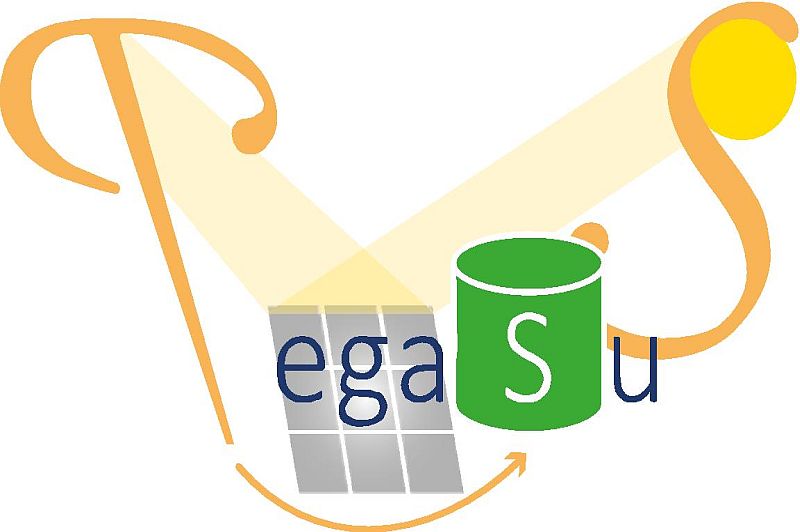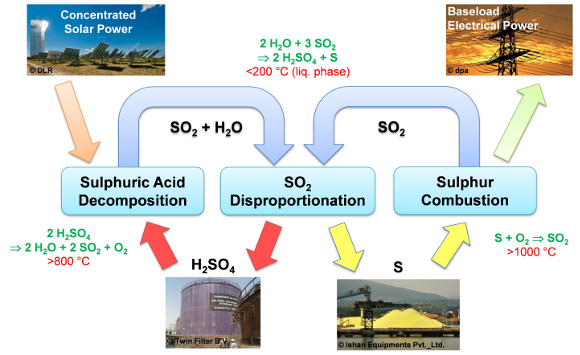Pegasus

In PEGASUS, a new process for electricity generation based on renewable energy is being investigated. This process combines the technology of concentrating energy input from solar energy through a particle centrifuge-based collector with a sulfur-based energy storage system. The proposed process combines flowing particles as a heat transfer medium, which can additionally be used as a direct thermal storage medium, with indirect thermochemical storage of solar energy in solid sulfur. This enables the integration of a solar power plant as a regenerative power generator in 24-hour operation.

The overall objective of PEGASUS is the development and demonstration of an innovative solar tower system based on a solid particle collector in combination with a thermochemical storage system for solar energy based on elemental sulphur. The aim is to enable reliable power generation at a significant cost reduction compared to current concepts. The technology will be tested under real conditions in the Jülich Solar Tower (STJ) in Germany.
For this purpose, the following project-specific technical goals must be achieved by KIT:
-
The development and realization of a new laboratory-scale sulfur burner that allows stable combustion conditions in a range of 10-50 kW with > 99% combustion efficiency and power densities of > 1.5 MW/m3 (This corresponds to a value three times higher than conventional sulfur combustion plants) under atmospheric conditions and temperatures >1400°C .
- In collaboration with the project partners, the feasibility of the overall process will be demonstrated, the detailed overall flowsheet will be prepared and an analysis of the optimized integrated process scaled up to 5 MWth will be performed. This will include an evaluation of the technology against the target.
Further information is explained in a KIT press release and at the project website (link below).

